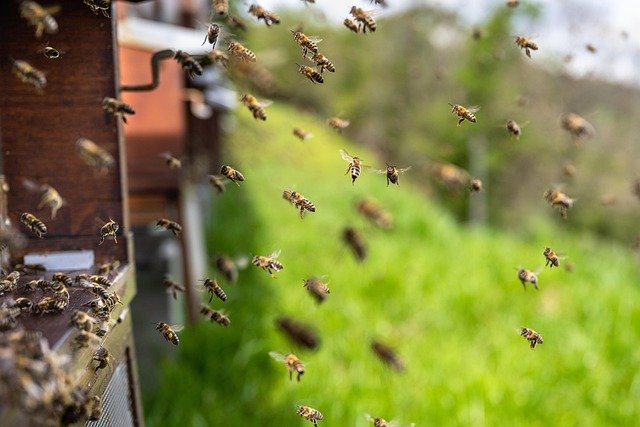Beekeeping in Urban Environments: A Sweet Solution for City Dwellers
The buzz of bees in a bustling metropolis might seem like an unlikely pairing, but urban beekeeping is rapidly gaining popularity as a sustainable and rewarding hobby for city dwellers. This fascinating practice not only provides fresh, local honey but also contributes to urban biodiversity and pollination. As more people seek ways to reconnect with nature and support local ecosystems, urban beekeeping has emerged as an unexpected yet delightful solution.

The history of urban beekeeping dates back to ancient civilizations, where bees were kept in clay pots and woven skeps. However, the modern urban beekeeping movement gained momentum in the early 2000s, coinciding with growing concerns about declining bee populations and the need for sustainable urban practices.
Benefits of Urban Beekeeping
Urban beekeeping offers numerous advantages for both individuals and communities. For city residents, it provides an opportunity to produce their own honey, beeswax, and other hive products. This not only ensures a supply of fresh, local honey but also fosters a deeper connection to the food production process.
From an ecological perspective, urban bees play a crucial role in pollinating city gardens, parks, and green spaces. This contributes to increased biodiversity and helps maintain the health of urban ecosystems. Additionally, bees can serve as valuable bioindicators, providing insights into the overall environmental health of a city.
Economically, urban beekeeping can create new business opportunities for local entrepreneurs. From artisanal honey production to beekeeping workshops and equipment suppliers, the practice has the potential to stimulate local economies and create unique urban products.
Challenges and Considerations
While urban beekeeping offers many benefits, it also comes with its own set of challenges. One of the primary concerns is ensuring the safety of both bees and humans in densely populated areas. Proper hive placement, management techniques, and community education are essential to minimize potential conflicts.
Space constraints in urban environments can also pose challenges for beekeepers. Creative solutions, such as vertical hives and shared community apiaries, have emerged to address these limitations. Additionally, urban beekeepers must navigate local regulations and zoning laws, which can vary significantly between cities.
Another consideration is the potential impact on native bee species. While honeybees are excellent pollinators, they can compete with native bees for resources. Urban beekeepers are increasingly encouraged to support a diversity of pollinators by planting native flowers and creating habitats for various bee species.
Getting Started with Urban Beekeeping
For those interested in urban beekeeping, getting started requires careful planning and preparation. The first step is to research local regulations and obtain any necessary permits. Many cities have specific guidelines for keeping bees in urban areas, including restrictions on hive numbers and placement.
Education is crucial for successful urban beekeeping. Aspiring beekeepers should consider taking courses or workshops to learn about bee biology, hive management, and safety procedures. Joining local beekeeping associations can provide valuable support and resources.
Equipment costs for urban beekeeping can vary widely, depending on the scale of the operation and the type of hives used. A basic setup, including a hive, protective gear, and tools, typically ranges from $500 to $1,000. Ongoing costs for maintenance and supplies should also be factored into the budget.
Innovative Urban Beekeeping Projects
Across the globe, innovative urban beekeeping projects are pushing the boundaries of what’s possible in city environments. In Paris, the Opera Garnier houses beehives on its roof, producing honey that is sold in the opera house’s gift shop. This project not only provides a unique local product but also raises awareness about urban biodiversity.
In Copenhagen, the Bella Center convention complex has integrated beehives into its sustainability efforts. The honey produced is used in the center’s restaurants and given as gifts to visitors, showcasing the potential for businesses to incorporate beekeeping into their operations.
Technology is also playing a role in urban beekeeping. Smart hives equipped with sensors can monitor hive health, temperature, and honey production, allowing beekeepers to manage their colonies more efficiently. These technological advancements are making urban beekeeping more accessible and data-driven.
The Future of Urban Beekeeping
As cities continue to grow and evolve, urban beekeeping is likely to play an increasingly important role in sustainable urban development. The practice offers a unique opportunity to reconnect city dwellers with nature, support local ecosystems, and promote environmental awareness.
Looking ahead, we can expect to see more integration of beekeeping into urban planning and architecture. Green buildings with built-in apiaries, community-supported beekeeping programs, and urban honey cooperatives are just a few examples of how this practice might evolve.
Urban beekeeping also has the potential to contribute to food security and resilience in cities. As interest in local food production grows, urban honey and other bee products could become important components of city-based food systems.
In conclusion, urban beekeeping represents a fascinating intersection of nature, sustainability, and urban living. By bringing bees into our cities, we not only sweeten our urban environments but also contribute to a more sustainable and biodiverse future for our urban spaces.





